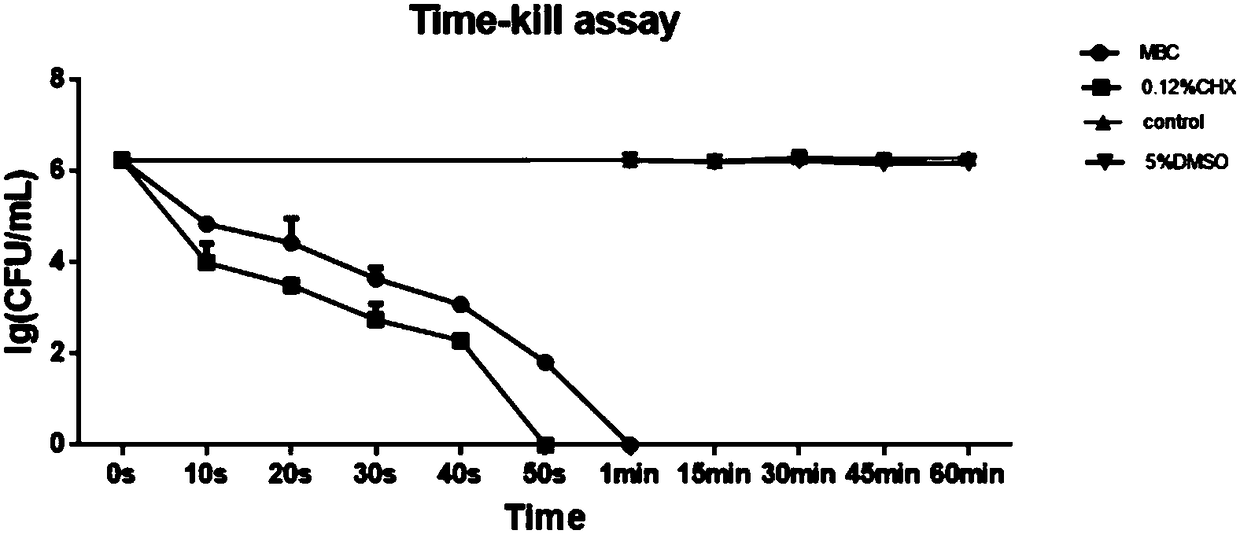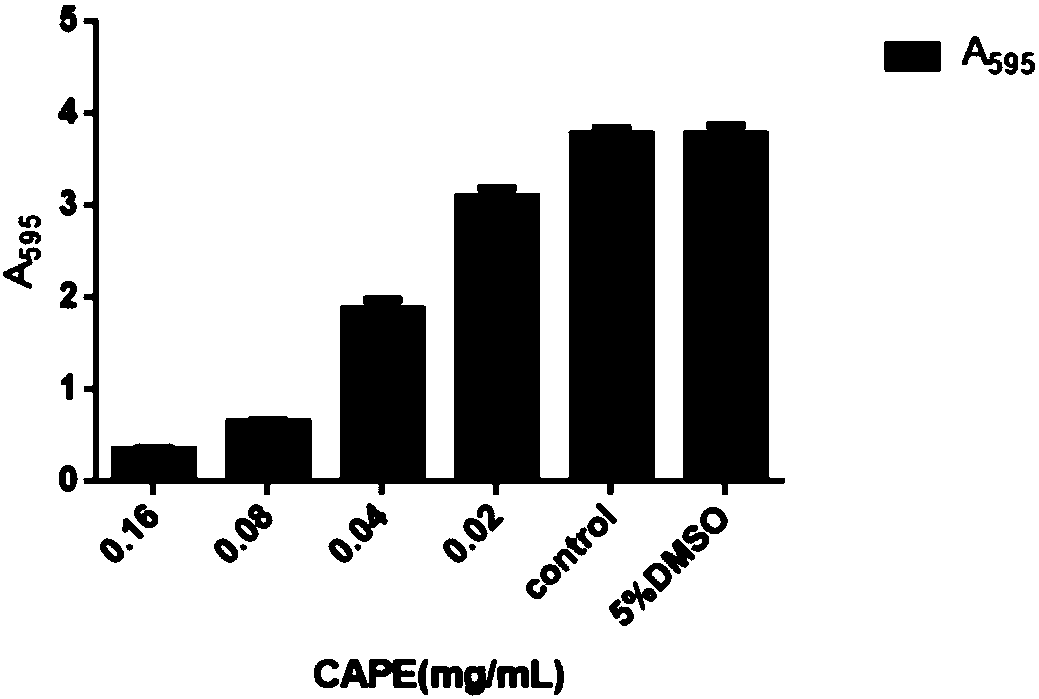Application of caffeic acid phenethylester in preparing of caries-prevention or anti-caries preparation
A technology of phenethyl caffeate and preparations, which is applied in the field of caries prevention and treatment, can solve the problem of no research and reports on the anti-caries effect, and achieve the effect of preventing tooth demineralization, low production cost and single ingredient
- Summary
- Abstract
- Description
- Claims
- Application Information
AI Technical Summary
Problems solved by technology
Method used
Image
Examples
Embodiment 1
[0040] Embodiment 1 Minimum Inhibitory Concentration (MIC) and Minimum Bactericidal Concentration (MBC) Determination
[0041] The minimum inhibitory concentration MIC (Minimal inhibitory concentration) refers to the lowest concentration of antibacterial drugs that can inhibit the growth of bacteria in the medium in vitro tests. Minimal bactericidal concentration MBC (Minimal bactericidal concentration) refers to the minimum concentration of antibacterial drugs that can kill viable bacteria in the medium in vitro tests. MIC and MBC are indicators of drug antibacterial activity, showing the ability of drugs to inhibit and kill pathogenic microorganisms. The bacteria used in the experiment are common oral cariogenic bacteria: Streptococcus mutans UA159, Streptococcus sobrinus 6715, Streptococcus sanguinis ATCC10556, Actinomyces viscosus ATCC15987, acidophilus Bacillus (Lactobacillus acidophilus ATCC14931) was provided by the State Key Laboratory of Oral Diseases Research, and w...
Embodiment 2
[0057] The mensuration of embodiment 2 sterilization curves
[0058] Bactericidal kinetics is an index reflecting the relationship between drug antibacterial ability and action time. The bacteria used in the experiment were the main oral cariogenic bacteria, Streptococcus mutans (Streptococcus mutans UA159). Chlorhexidine (CHX) was used as a positive control, 5% DMSO was used as a solvent control, and sterile deionized water was used as a negative control.
[0059] The experimental steps are as follows:
[0060] 1. Pick a single colony and culture overnight at 37°C in 10mL BHI liquid medium.
[0061] 2. Take 100 μL of bacterial solution and culture it in 10ml BHI liquid medium for 6 hours, dilute the bacterial solution to 2×10 6 CFU / mL for use.
[0062] 3. Phenylethyl caffeate was dissolved and diluted with 50% DMSO and added to a 24-well plate, 200 μL per well.
[0063] 4. Add 800 μL of BHI medium and 1 mL of spare bacterial solution to each well, so that the final conce...
Embodiment 3
[0069] The impact of embodiment 3 caffeic acid phenethyl ester on streptococcus mutans biofilm formation
[0070] 3.1 Caffeic acid phenethyl ester MBIC 50 determination
[0071] The minimum inhibitory biofilm concentration MBIC (Minimal biofilm inhibitory concentration) is an index reflecting the anti-biofilm formation ability of drugs. Among them MBIC 50 It refers to the lowest concentration of antibacterial drugs that can inhibit more than 50% of the biofilm formation in the medium in the in vitro test. Streptococcus mutans UA159 was used in the experiment, sterile deionized water was used as a negative control, and 5% DMSO was used as a solvent control.
[0072] The experimental steps are as follows:
[0073] 1. Pick a single colony and put it in a 37°C constant temperature anaerobic culture tank (80%N) in 10mL BHI liquid medium 2 , 10%H 2 , 10% CO 2 ) overnight culture.
[0074] 2. Take 100 μL of the bacterial solution and place it in a constant temperature anaerob...
PUM
 Login to View More
Login to View More Abstract
Description
Claims
Application Information
 Login to View More
Login to View More - R&D
- Intellectual Property
- Life Sciences
- Materials
- Tech Scout
- Unparalleled Data Quality
- Higher Quality Content
- 60% Fewer Hallucinations
Browse by: Latest US Patents, China's latest patents, Technical Efficacy Thesaurus, Application Domain, Technology Topic, Popular Technical Reports.
© 2025 PatSnap. All rights reserved.Legal|Privacy policy|Modern Slavery Act Transparency Statement|Sitemap|About US| Contact US: help@patsnap.com



